Przemyśl station: easy on the eyes
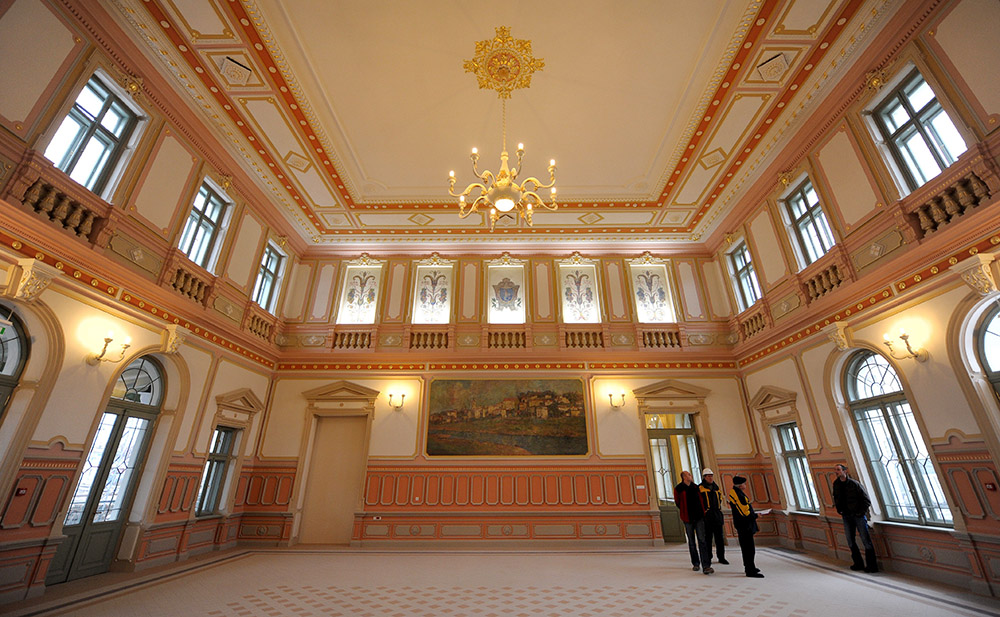 The renovated interior of the historic Central Station in Przemyśl, photo: Darek Delmanowicz/PAP
The renovated interior of the historic Central Station in Przemyśl, photo: Darek Delmanowicz/PAPSome say a railway station is showpiece snapshot of a city, in which case Przemyśl must be a work of art. The building closely resembles a palace and looks almost the same today as it did at the end of the 19th century. In 1860, the building was expanded and given a neo-baroque air in the style of the Vienna Central Station. More than a hundred years later, after several renovations – some more (the one finished in 2012) or less (the one carried out under the communist regime) successful – its old splendour has been restored.
The interior doesn’t resemble a typical cold, gloomy railway station. Murals are framed by pastel shades. The main hall features ornate ceilings decorated by Feliks Wygrzywalski and Jan Talaga with coats of arms and representations of crafts. Moreover, Marian Stroński’s panoramas of the city are now illuminated by a restored antique wooden chandelier. Once lost architectural details have been restored using archival photographs: gilded objects, windows, even door handles. The floor in the old lounge dates back to the times of the first travellers heading to Vienna or Lviv.
Łódź Fabryczna station: timeless
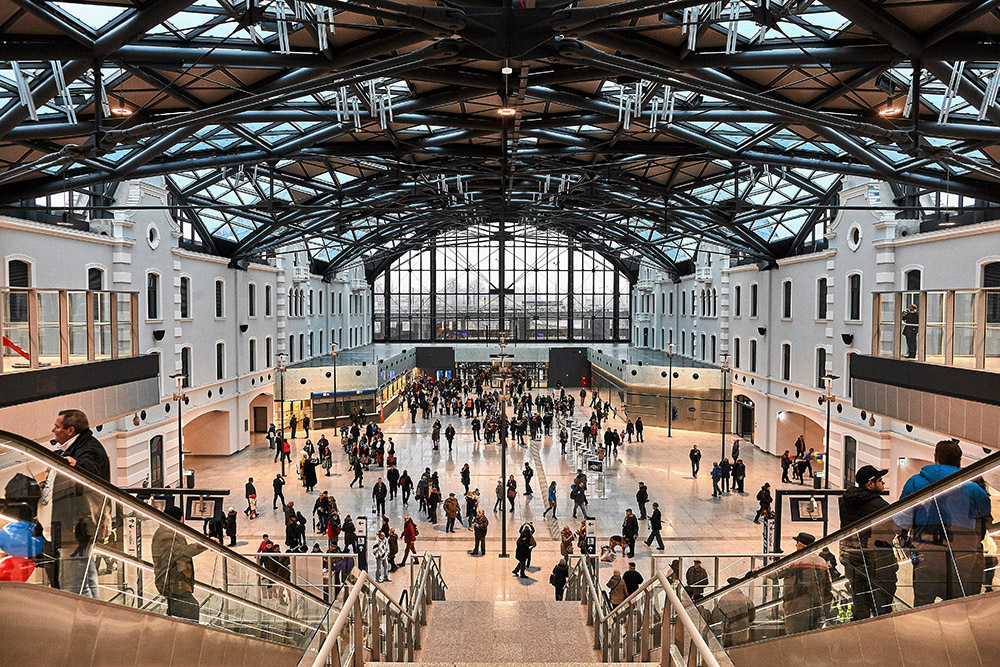 Łódź Fabryczna station, photo: Tomasz Stańczak / Agencja Gazeta
Łódź Fabryczna station, photo: Tomasz Stańczak / Agencja GazetaAn impatient couple standing on a platform, a redheaded beauty holding a camera, a mannerly older man removing his bowler hat – Polish illustrator Katarzyna Bogucka depicted this everyday scene in one of the murals in Łódź Fabryczna station’s new waiting room situated 8-metres underground. The platforms are located 16.5 m underground. The entrance to the industrial structure is situated on street level, built mostly out of stone and glass, the building boasts a steel-supported roof with 10,000 triangle glass panels. A marriage of modernity and tradition – the walls of the walkway recall the old architecture of the Łódź Fabryczna railway station.
The construction of the first train station in Łódź began in September 1865, and just two months later, in November, the first freight trains passed through the station. During the interwar period, there were plans to rebuild the station to make it more like those in major European cities. This renovation was finally undertaken nearly a hundred years later –the 21st-century building was opened in December 2016 after five years of construction. In 1934, the extravagant high-speed trains Luxtorpeda were in the testing phase and travel from Łódź to Warsaw took 88 minutes – about as much as it takes today.
Wrocław Central Station: literary bliss
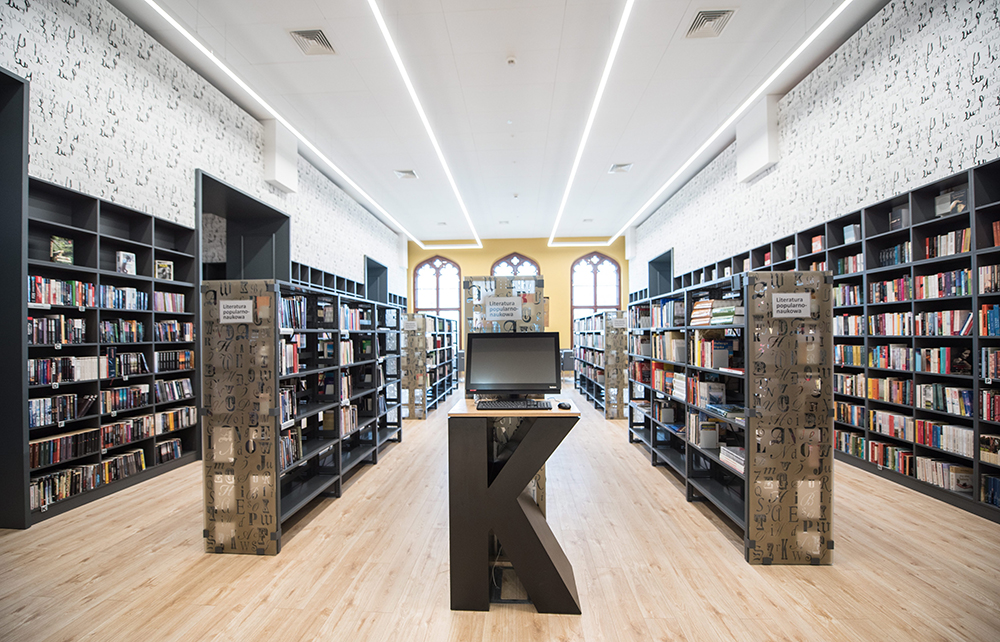 Multimedia library, Central Station in Wrocław, photo: Kornelia Głowacka-Wolf / Agencja Gazeta
Multimedia library, Central Station in Wrocław, photo: Kornelia Głowacka-Wolf / Agencja GazetaIn the 1850s in Wrocław, Wilhelm Grapow, the royal Prussian architect, designed and erected the majestic railway station reminiscent of the Tudor’s gothic style. The art nouveau ticket windows and the glazed hall above the platforms are the relics of the 20th-century extension. The synergy of historical architecture and modern technology is the result of the modernisation work carried out between 2010 and 2013 by a Warsaw-based architectural firm Grupa 5 Architekci.
The horse carriage station is today an underground parking lot and the waiting room consisting of separate areas for the first, second and third class has become a reading space and a round-the-clock lobby resembling a railway wagon. One thing remains the same – Wrocław’s railway station is the most culturally-inclined train station in Poland. This is where the first railway-station-based cinema was established – its screenings were frequented by actor Zbigniew Cybulski (a plaque commemorating his tragic death is situated on platform 3, where he died in a fatal accident), and in 1980 director Janusz Morgenstern shot his Mniejsze Niebo (editor’s translation: A Smaller Sky) there. Nowadays, it’s worth visiting the Kuchnia Literacka (editor’s translation: The Literary Kitchen), a space with children’s books and a city library arranged to resemble a cozy apartment. Polish writer Józef Ignacy Kraszewski’s remark about the ‘grand building of the railway’ still rings true today.
Gdynia Główna: cultural hub
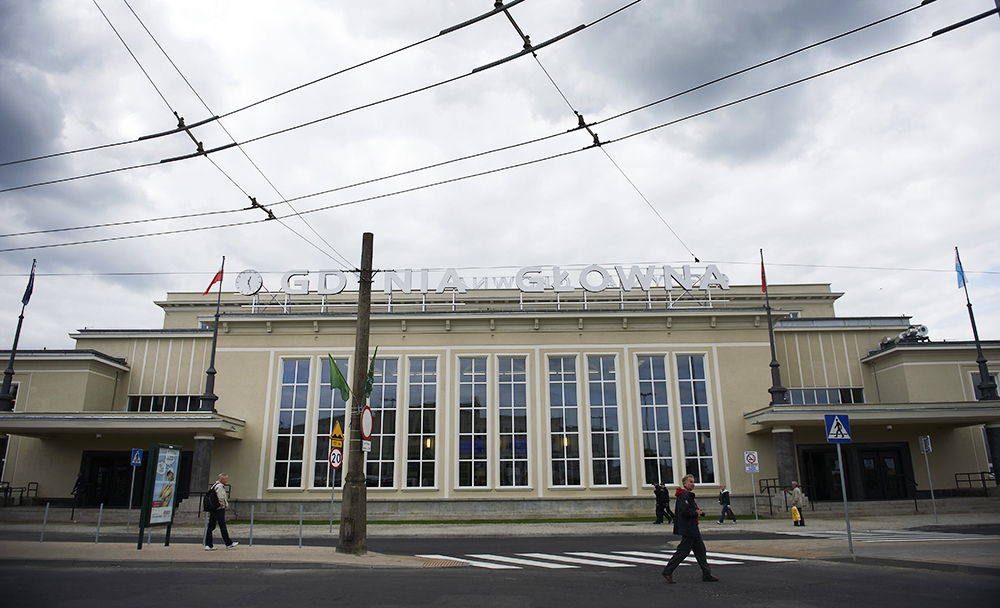 Gdynia Główna railway station, photo: Adam Warżawa / PAP
Gdynia Główna railway station, photo: Adam Warżawa / PAPGdynia went cutting edge. The main railway station was renovated in 2012 and is quite impressive with its elegant modernistic à la socialist-realist structure designed by Wacław Tomaszewski in the 1950s. The interior is even grander – plastic banners and coffering have been removed to reveal real works of art. Some of the wall paintings were discovered entirely by accident, as they were not mentioned in any sources. A layer of paint was hiding a map of the world, while the ceiling of the restaurant hall was adorned with a polychrome by Julisz Studnicki. Teresa Pągowska and Stanisław Teisseyre’s beautiful mosaics with marine motifs Remind travellers about city’s true maritime nature.
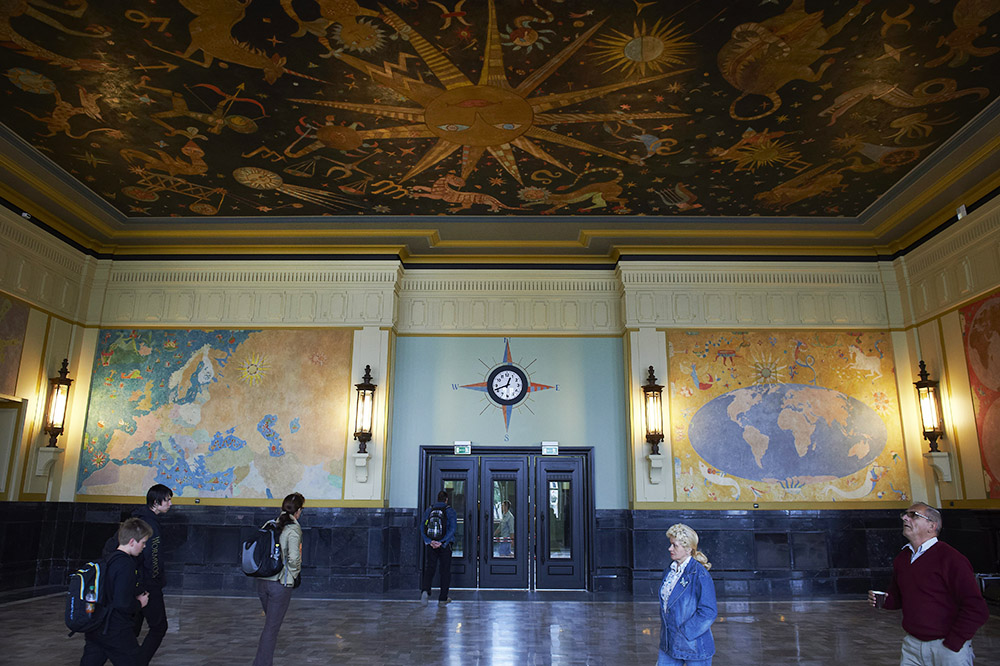 Gdynia Główna railway station, interior, photo: Adam Warżawa/PAP
Gdynia Główna railway station, interior, photo: Adam Warżawa/PAPIn turn, Mewa: Dziwna Sztuka (editor’s translation: The Seagull: A Bizarre One) based on Chekhov’s play and Emigrantka (editor’s translation: The Emigrant) have been staged at the Gdynia Główna Theatre, located under the main station. Other facilities include the Pęd Sztuki Gallery, the Poczekalnia Kultury – a cultural consulting office, and Stacja Bajek – a theatre for children.
Solec Kujawski: common space dynamic
The old Polish railway station in Solec Kujawski was a two-and-a-half storey brick building from 1898. That structure now stands in the shadow of its successor. The sleek, glazed construction developed by RYSY Architekci was built in 2016. The new transportation hub is light, dynamic and well integrated in the urban landscape. The railway’s embankment was turned into steps which bring to mind an amphitheatre and complemented with greenery and a promenade. The station has become a space enthusiastically used by the inhabitants of Solec Kujawski.
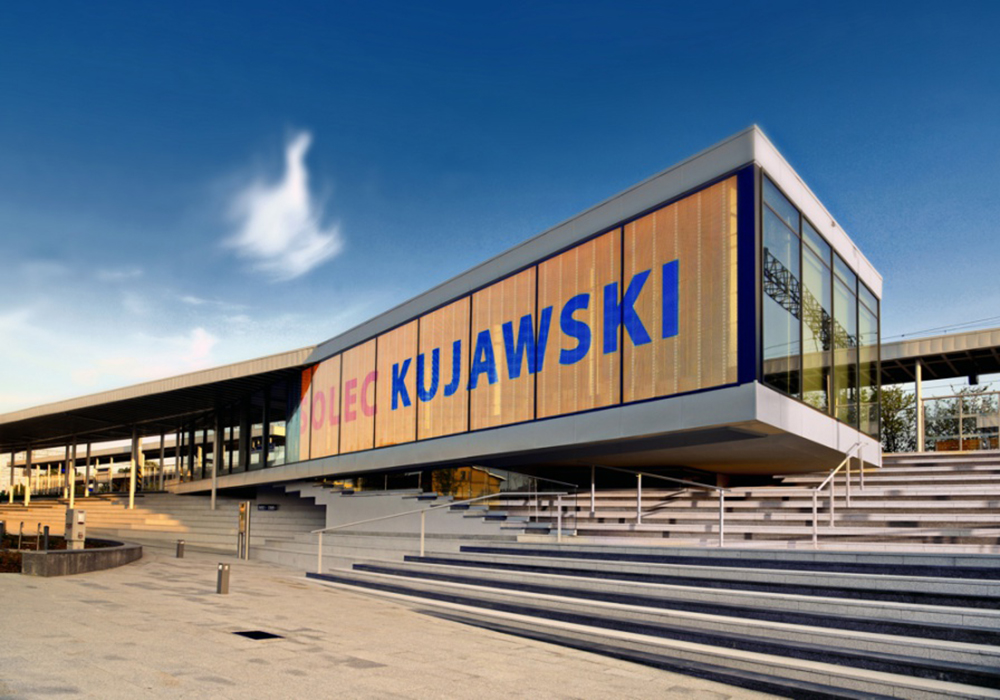 The Solec Kujawski railway station, photo: soleckujawski.pl
The Solec Kujawski railway station, photo: soleckujawski.plThe railway station in Solec Kujawski with its welcoming public square and entrances to the platforms was the final hurrah in the BiT-City programme – an investment in six hubs linking Bydgoszcz and Toruń. The next edition of the project is supposed to involve other cities in the region – Włocławek, Grudziądz and Inowrocław.
Sources: Agnieszka Warnke, June 2017, translated by AP, July 2017